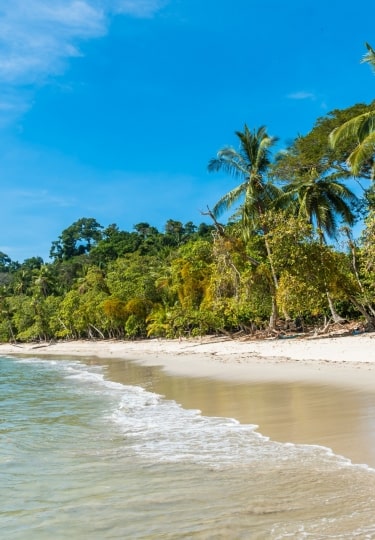When it comes to beaches, beauty is often in the eye of the beholder. That said, it’s hard to find fault with the beaches in Central America, with their white sand, clear water and palm trees swaying in the breeze.
It comes as no surprise that much of Central America’s visitor appeal centers along its diverse coastlines. Whether you’re craving a day of fun in the sun or are ready to explore the underwater world, beaches from Costa Rica to Honduras, Belize, and Guatemala will take your breath away.
So start planning your sunny, seaside escape now with this list of the 11 best beaches in Central America.
Manuel Antonio Beach, Puntarenas, Costa Rica
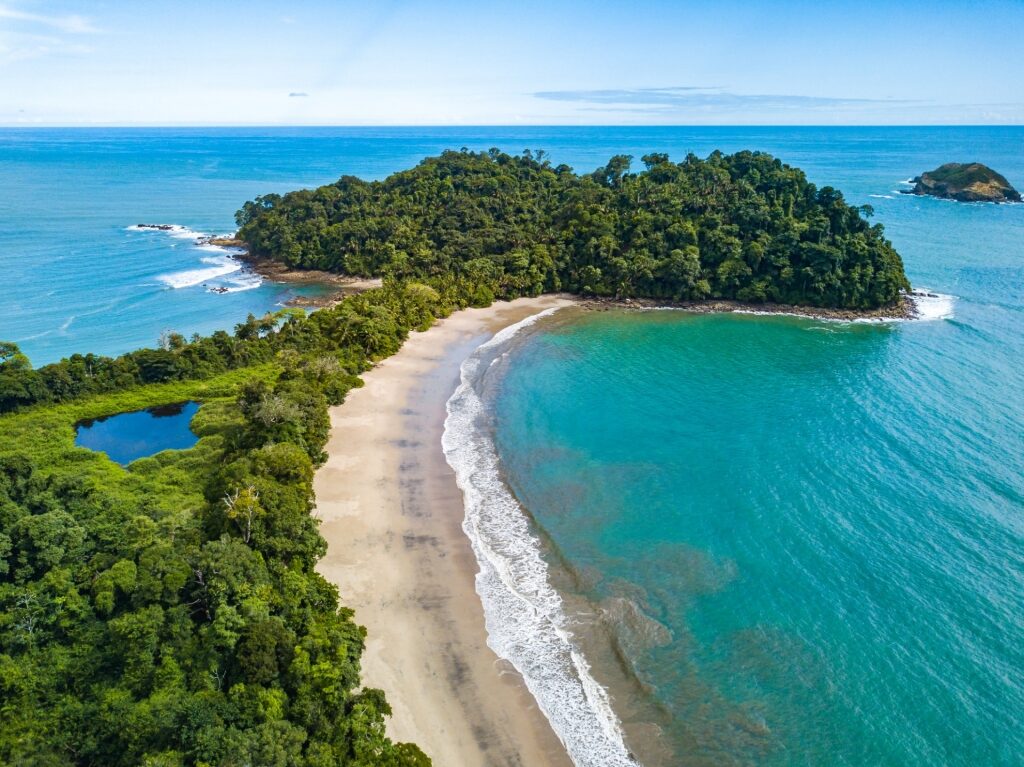
Manuel Antonio Beach in Puntarenas, Costa Rica
No trip to Costa Rica is complete without a visit to Manuel Antonio National Park in Puntarenas, where you’ll find one of the finest Central American beaches.
It’s surprising to learn that this seemingly vast expanse of rainforest and sandy beach is actually the smallest of Costa Rica’s 161 national parks.
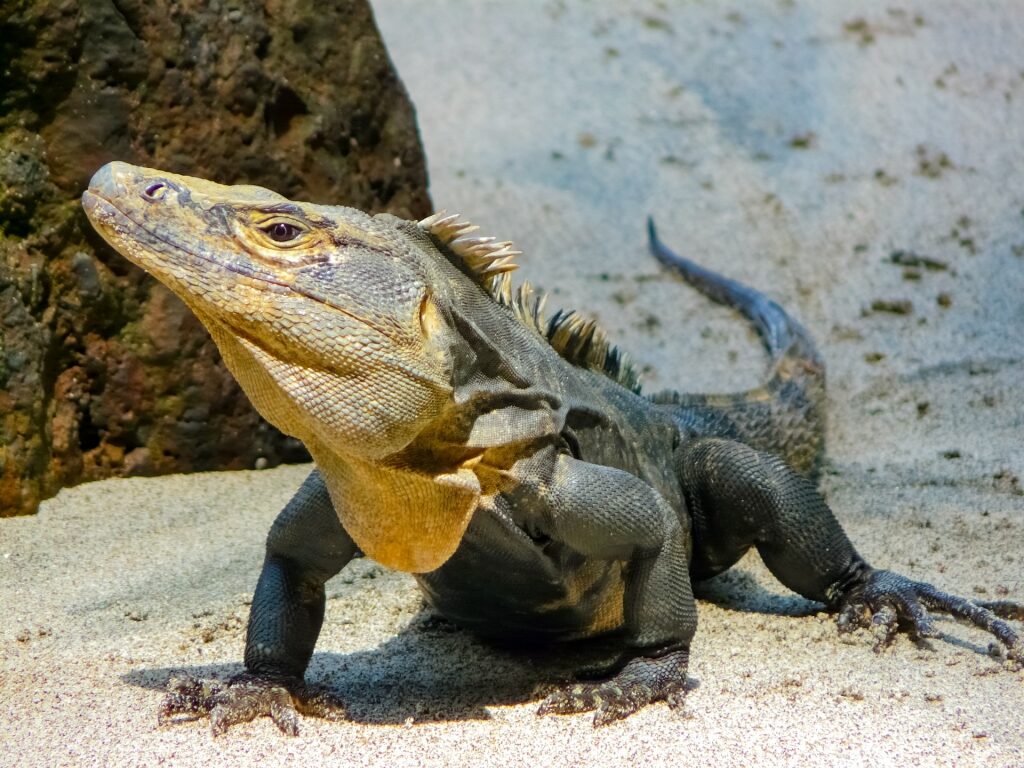
Iguana
There are 109 types of mammals living here and 184 bird species. Visitors are likely to see creatures from capuchin monkeys to iguanas, dolphins, and even migrating whales.
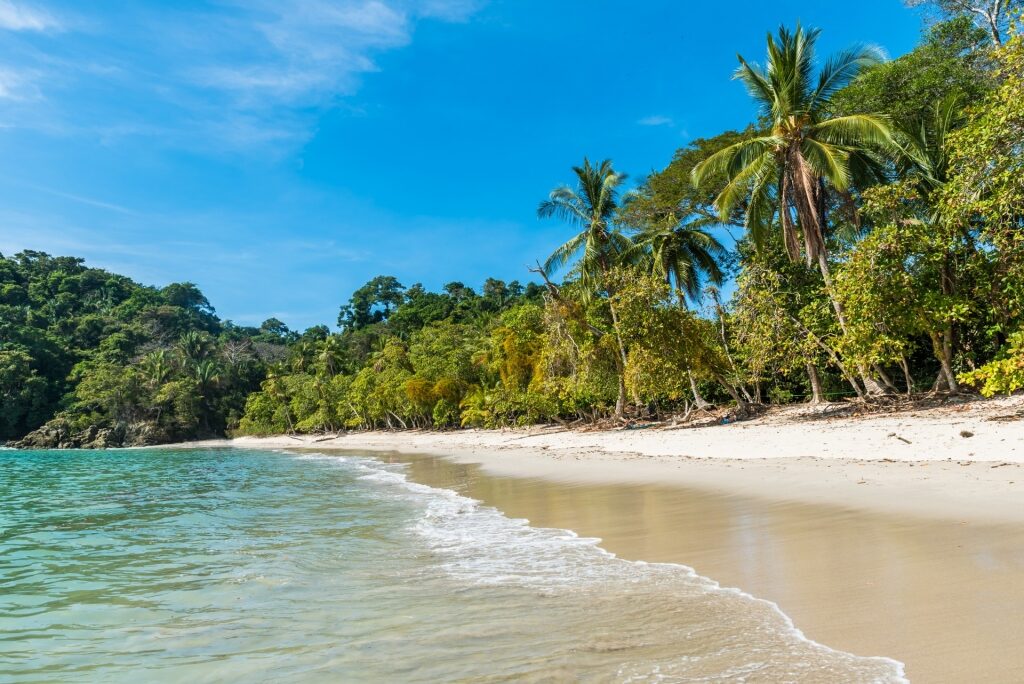
Manuel Antonio Beach in Puntarenas, Costa Rica
Manuel Antonio Beach is regularly ranked among the best beaches in Central America, and for good reason. The beach stretches for a half-mile, its ivory-colored sand contrasted by the deep green of the mangroves and palm trees.
The beach is set in a cove and while the ocean can sometimes be a little rough, the tidal pools are safe for snorkeling. If you pack food into your beach bag, beware; cheeky raccoons may well make an appearance while you are swimming and riffle through your belongings.
Punta Uva Beach, near Puerto Limón, Costa Rica

Punta Uva Beach, near Puerto Limón, Costa Rica
Located just north of the Panamanian border along Costa Rica’s Pacific coast, Punta Uva is as picture-perfect as it gets.
The white sand beach feels soft between your toes, and the palm trees overhead provide some much-needed shade for a picnic. Take a dip in the clear water as you marvel at the marine life below, or soak up the sun with a good book.

Punta Uva Beach, near Puerto Limón, Costa Rica
One of the biggest draws to Punta Uva is how secluded it feels, despite being a habitat for so many species of wildlife. There are no big resorts in the area, which help in keeping the beach true to its roots.
Keep an eye out for butterflies, especially the dazzling blue Morpho. In fact, there are some amazing butterfly gardens in the area, as well as the Bribri Indigenous Reserve.
In the trees, you might also spot a slow-moving sloth or a quick-witted monkey. Speaking of trees, Punta Uva translates as “grape point”, which is the name of a sea grape tree growing along the beachside.
Tabyana Beach, Roatán, Honduras

Tabyana Beach in Roatán, Honduras
Arguably the most beautiful beach in Roatán, Tabyana Beach is a go-to for snorkeling and soaking up the sun. Coconut and almond trees grow alongside the beach, and only 70 feet separate the white sand beach from a teeming reef.
Roatán itself is a 40-mile-long island that borders the world’s second-longest barrier reef, making the island one of the best places to visit in Central America. Activities range from snorkeling and kayaking to banana boat rides and beach volleyball.
Just beyond the beach, you can explore some of Roatán’s history and culture with a stop at the nearby chocolate and rum factory, The Roatán Rum Company. It’s centrally located near the Roatán lighthouse, making it an easy add-on to your trip.
Tours are offered Monday through Saturday and include samples of chocolate rum, their flavorful rum cake, and other local treats. From the top, a vantage point called Rum Point, there’s a great view of both sides of the island.
West Bay Beach, Roatán, Honduras

West Bay Beach in Roatán, Honduras
Another popular beach in Roatán, Honduras is West Bay Beach. There’s something for every interest on these shores, from snorkeling and scuba diving to glass-bottom boat rides. West Bay is family-friendly and suitable for young children, a big reason being that the water is shallow here.

West Bay Beach in Roatán, Honduras
One of the best things to do in Roatán is to join a fishing or scuba diving boat for a guided tour, or rent snorkel gear and explore on your own. The protected reef in West Bay is an ideal spot for watching angelfish, parrotfish, coral, and sea turtles among the coral heads.
When you’ve worked up an appetite, head to one of several beachfront restaurants. Beachers Bar & Grill West serves fresh lobster tails and other seafood dishes. Choose a spot under the covered palapa and enjoy some shade as you gaze out at the sparkling water.
Caye Caulker, Belize
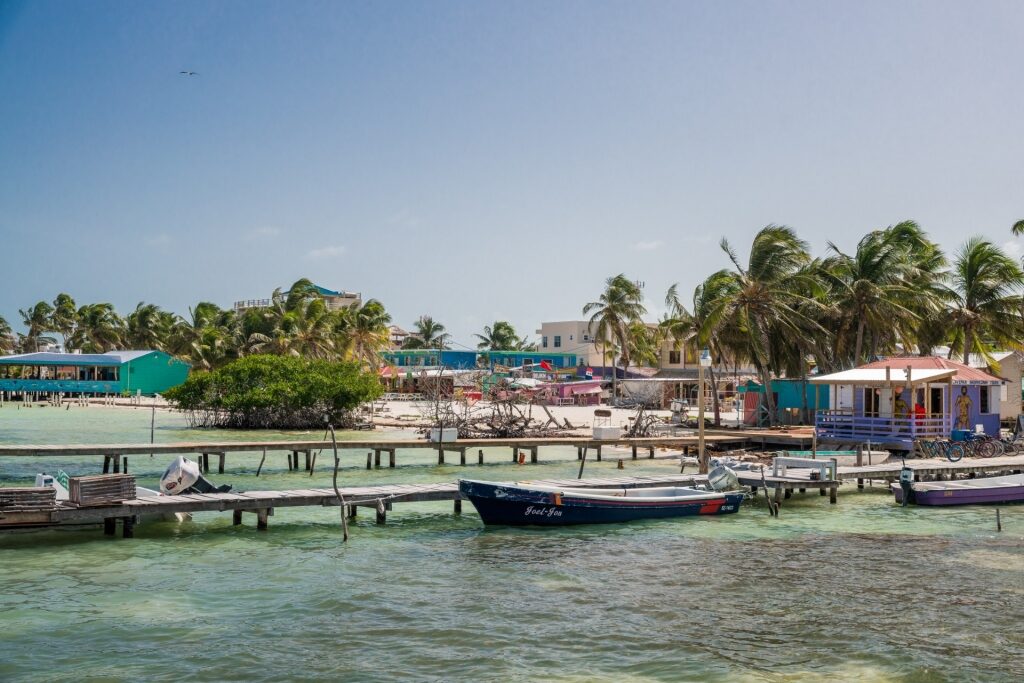
Caye Caulker, Belize
As the smaller sister island of Ambergris Caye, there’s a more relaxed, go-with-the-flow vibe in Caye Caulker, Belize.
The good news is that it’s only five miles long, so you can easily adopt a “go slow” attitude for the day. Although the caye is small, there are plenty of excursions and activities to keep everyone entertained.
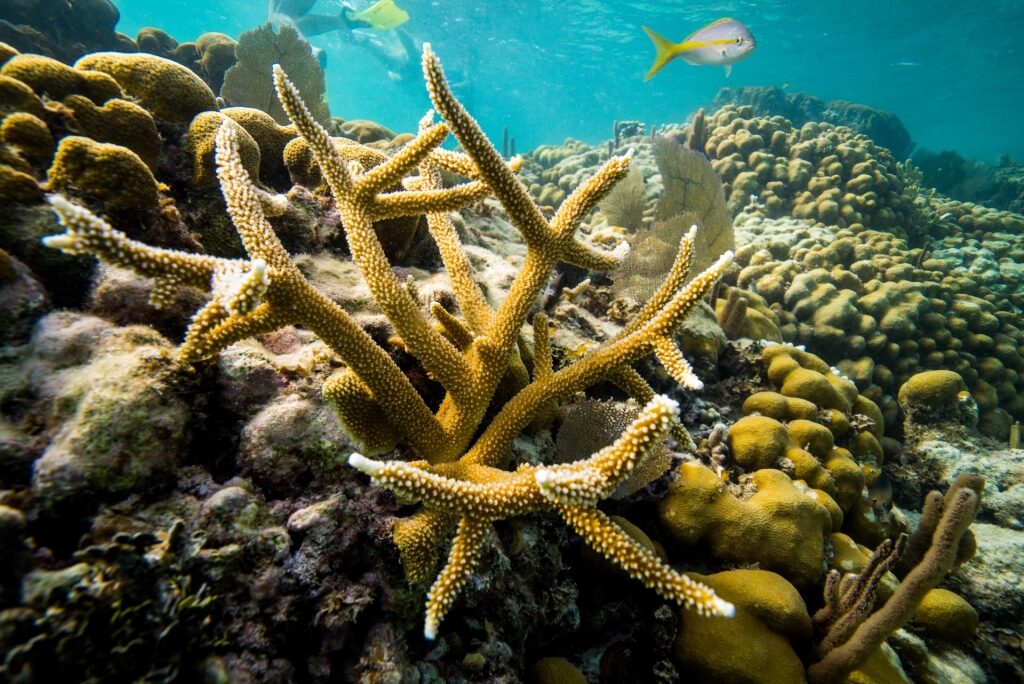
Caye Caulker, Belize
The best place to scuba dive or snorkel in Belize is in the Belize Barrier Reef, located about one mile from the island. It’s common to spot manatees here, and although it’s not allowed to swim alongside these gentle “sea cows”, you can still marvel at these mammals from afar.
Alternatively, head to Caye Caulker’s “The Split”, a channel that divides the island into two parts. The waters are calm and shallow, making it a social watering hole to cool off and meet other travelers.
Stop for snacks at The Lazy Lizard, a bar and grill with open-air seating and a front-row seat to the channel.
Ambergris Caye, Belize
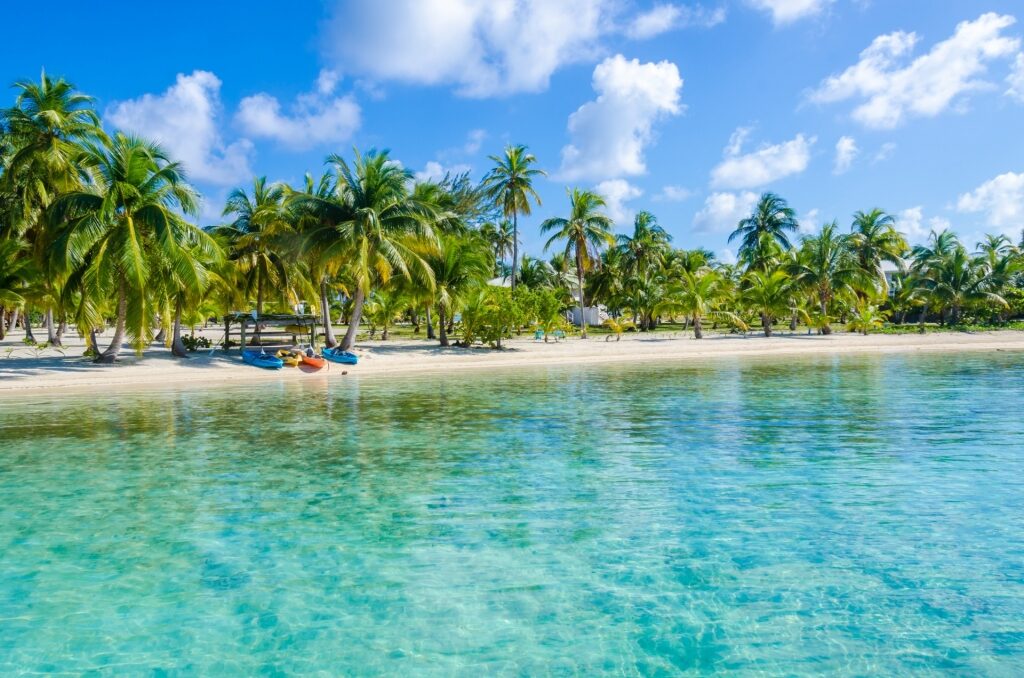
Ambergris Caye, Belize
Ambergris Caye is the largest of Belize’s many islands, 25 miles long, and naturally, a top travel destination in Central America.
Before increasing in popularity around 30 years ago, Ambergris Caye was primarily a fishing village and maritime trade area. Today, the caye is considered a gateway to Belize’s other top attractions.
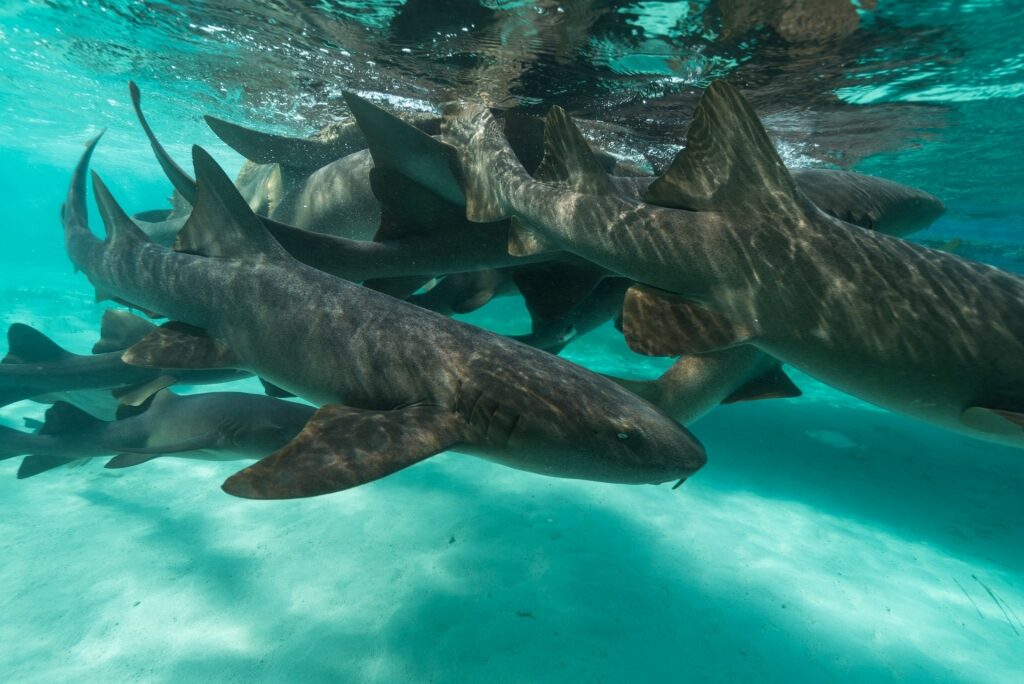
Shark Ray Alley, Belize
One of the most noteworthy facets of Ambergris Caye is that it is just off the world’s second-longest coral reef system, the Belize Barrier Reef.
Starting about a half-mile east of the Ambergris Caye shore, the UNESCO World Heritage Site stretches for 190 miles (the island itself is about 25 miles long). The country’s top diving spots are all a boat ride away, including Lighthouse Reef, Shark Ray Alley, and The Great Blue Hole.
As Belize’s largest island, there are some great beaches to explore in Ambergris Caye. Secret Beach, which is not so much of a secret anymore, is a popular spot for beach bars and restaurants serving Belizean food.
For a more relaxed environment, head to Tranquility Bay Beach and rent a kayak or snorkel over the reef.
Bannister Caye (Starfish Island), Belize
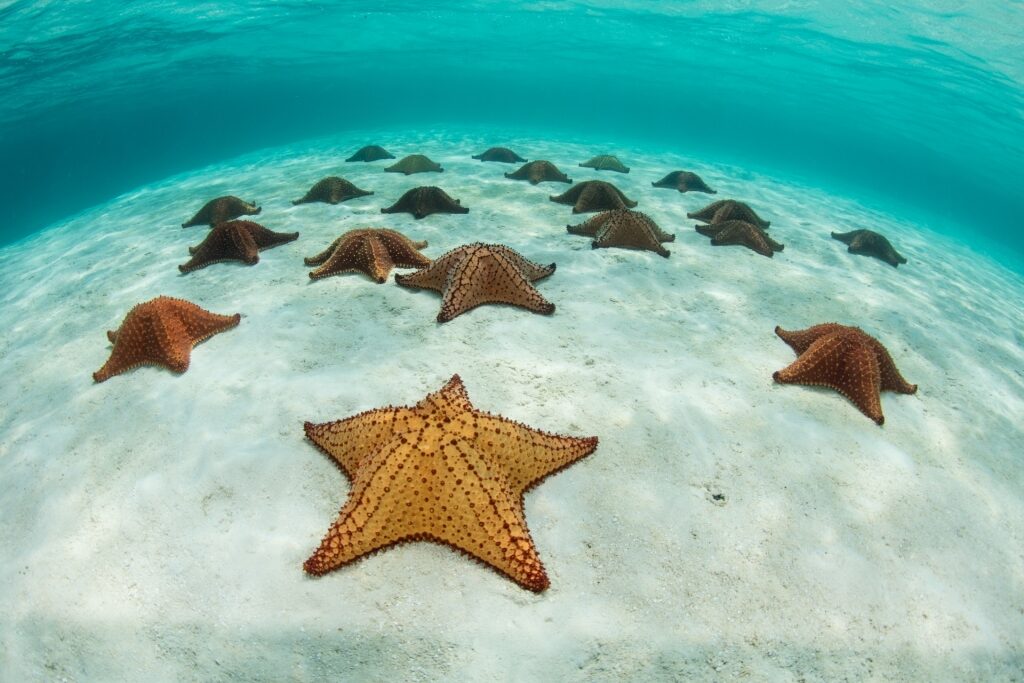
Bannister Caye (Starfish Island), Belize
Bannister Caye—also known as “Starfish Island”—is easily one of the most charming beaches in Belize. While it is technically a private island (and a manmade one), boats are allowed to stop here for snorkeling tours and excursions.
On most days, save for a few weather exceptions, the water is clear enough to see dazzling schools of fish and other marine life. The water here is pretty calm, so if you’re thinking about giving kayaking or stand-up paddleboarding a try, now’s the time.
As its alternative name suggests, Bannister Caye is home to starfish big and small. There’s even a designated area where the water is shallow enough to pick up the starfish. That being said, it’s safer for the animals if you just look, and don’t touch.
If you do pick one out of the water, make sure to return it back within five minutes.
Playa de Monterrico, near Puerto Quetzal, Guatemala
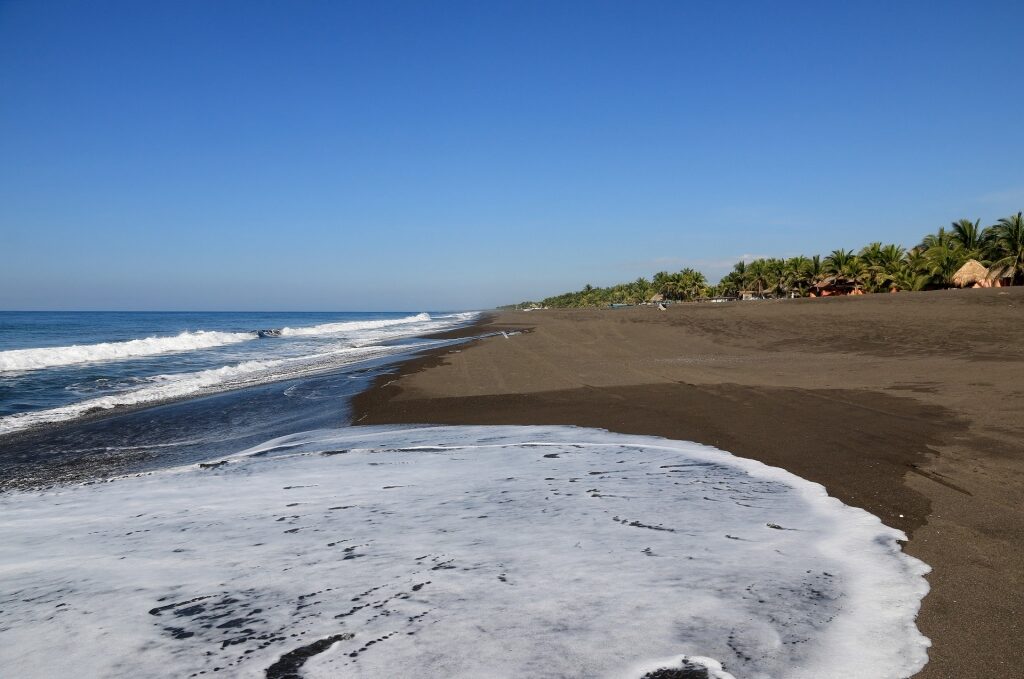
Playa de Monterrico, near Puerto Quetzal, Guatemala
As action-packed as travel can be, sometimes it’s nice to slow down and just take it all in. Playa de Monterrico is located near the city of Antigua but instead of a bustling urban scene, you’re greeted with a sleepy beachside town filled with friendly locals and fellow travelers.
This black sand beach is a popular weekend getaway, so if you’re hoping to avoid the crowds, plan to visit during the week.
Playa de Monterrico is beautiful but bare bones. It’s best to pack all your beach day essentials, including a beach umbrella, a good book, towels, and sunscreen. The waves are slightly bigger here than some of the other beaches in the region, but still suitable for swimming.
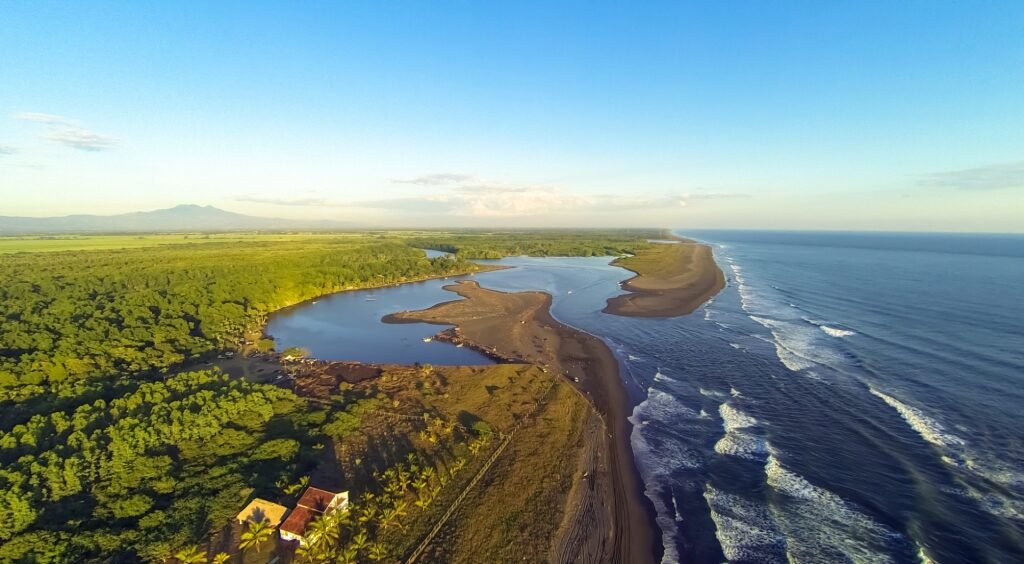
Playa de Monterrico, near Puerto Quetzal, Guatemala
Beyond the beach is the mangrove estuary, an important habitat for many species of birds, fish, and land-based creatures. The setting, lush with vegetation, is tranquil. As you glide through the mangroves, keep an eye out for caiman, monkeys, and colorful birds.
Playa Bonita, Puerto Limon, Costa Rica
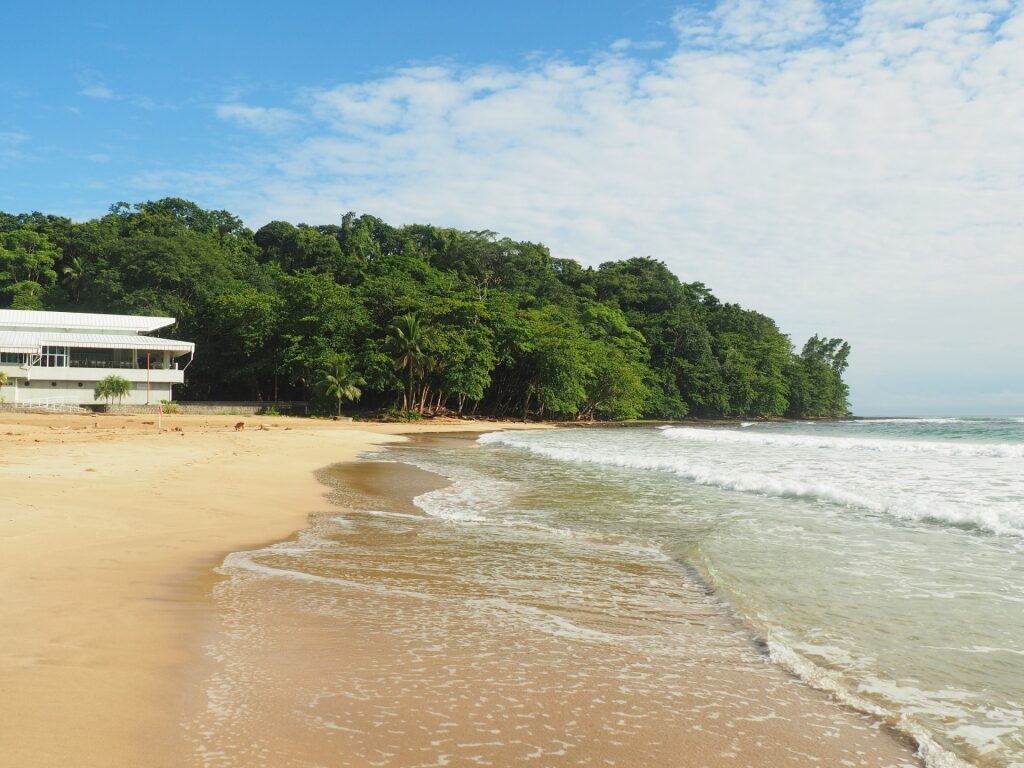
Playa Bonita in Puerto Limon, Costa Rica
Puerto Limon is located on the east coast of Costa Rica, on the country’s Caribbean side. What many don’t know is that Christopher Columbus arrived in what’s now Limon during his voyage to the New World, some 500 years ago. Today, there’s a large Afro-Caribbean population living here, which is reflected in all aspects of its culture.
There are several beaches in the Limon province, Playa Bonita—translated as “beautiful beach” from Spanish—being one of them. The beach is fairly secluded, yet still full of wildlife. There are howler monkeys in the trees and crabs scuttling across the sand.
Like many beaches in Central America, the waters are warm and clear, offering ideal conditions for snorkeling. It’s the perfect place to string your hammock from a tree and lay under the dappled shade of the palm trees overhead.
Playa Cocles, near Puerto Limon, Costa Rica
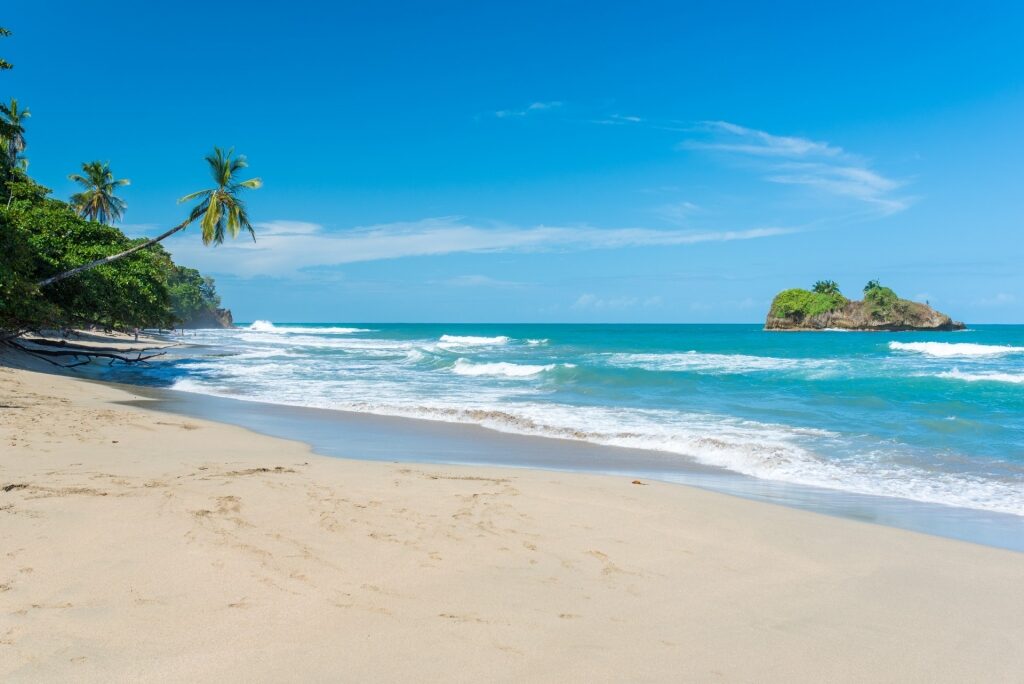
Playa Cocles, near Puerto Limon, Costa Rica
Most visitors traveling to Costa Rica spend all of their time on the Pacific side, therefore missing out on some incredible beaches. Playa Cocles is one of seven beaches along Costa Rica’s southern Caribbean coast, and while all are stunning in their own right, there’s something extra special about this playa in particular.
Playa Cocles is popular among surfers because the beach has both left and right breaks. Keep in mind, however, that beginners are better suited to beaches on Costa Rica’s Pacific side, where the waves are clean and break even. Waves at Playa Cocles are stronger, so an intermediate surf level is recommended.
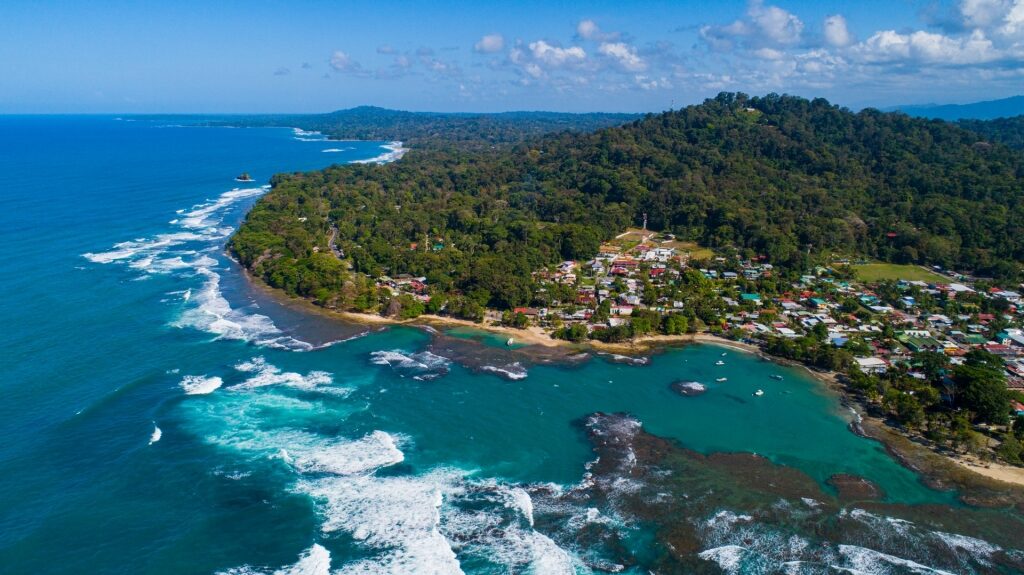
Puerto Viejo de Talamanca, Costa Rica
Come lunchtime, take your pick of several restaurants in town and along the coast of Puerto Viejo de Talamanca. Sol de Caribe is exactly what you might expect—a no-frills eatery serving Afro-Caribbean food in a friendly atmosphere. Try the Caribbean chicken; it comes with a spicy kick.
Playa Manzanillo, near Puerto Viejo de Talamanca, Costa Rica
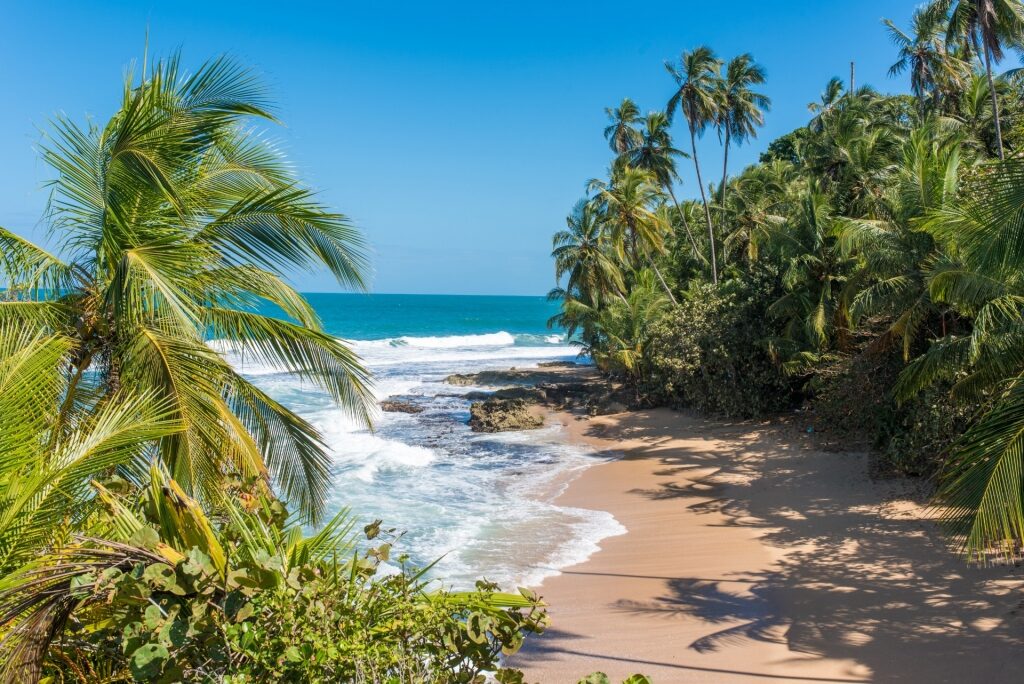
Playa Manzanillo, near Puerto Viejo de Talamanca, Costa Rica
The fishing village of Manzanillo is the most southerly town located along Costa Rica’s Caribbean coast, around an hour and a half’s drive from Limon towards the border with Panama.
Charming, full of character and reflective of the country’s Afro-Caribbean culture, it features white sand beaches and pristine Costa Rican nature.
The turquoise ocean water adds to Manzanillo’s ideal snorkeling conditions. The top two sites to visit are the coral reef just off the shore and an abandoned ship.
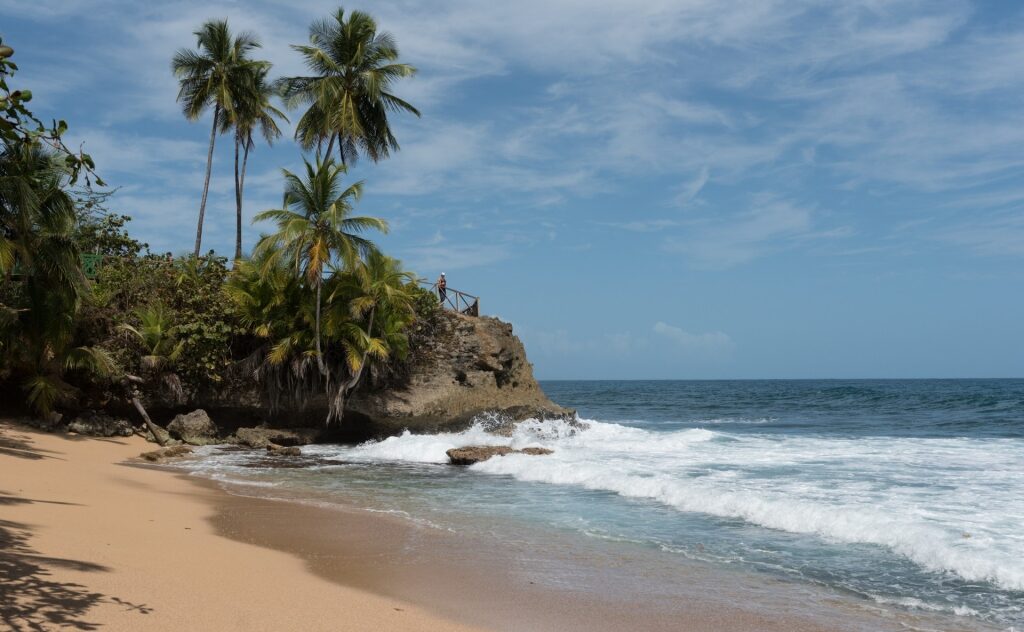
Gandoca Manzanillo Wildlife Refuge, Costa Rica
If you are exploring Costa Rica’s Caribbean coast, don’t leave without visiting the Gandoca Manzanillo Wildlife Refuge. Established in 1985, the refuge protects an incredible range of species, from manatees to crocodiles, caimans, turtles, toucans, and dolphins.
The nature park offers trails that weave through its beaches, rainforest, little coves, rocky terrain and everywhere in between. For a gorgeous photo, head to the Punta Manzanillo viewpoint and watch as the waves crash below.
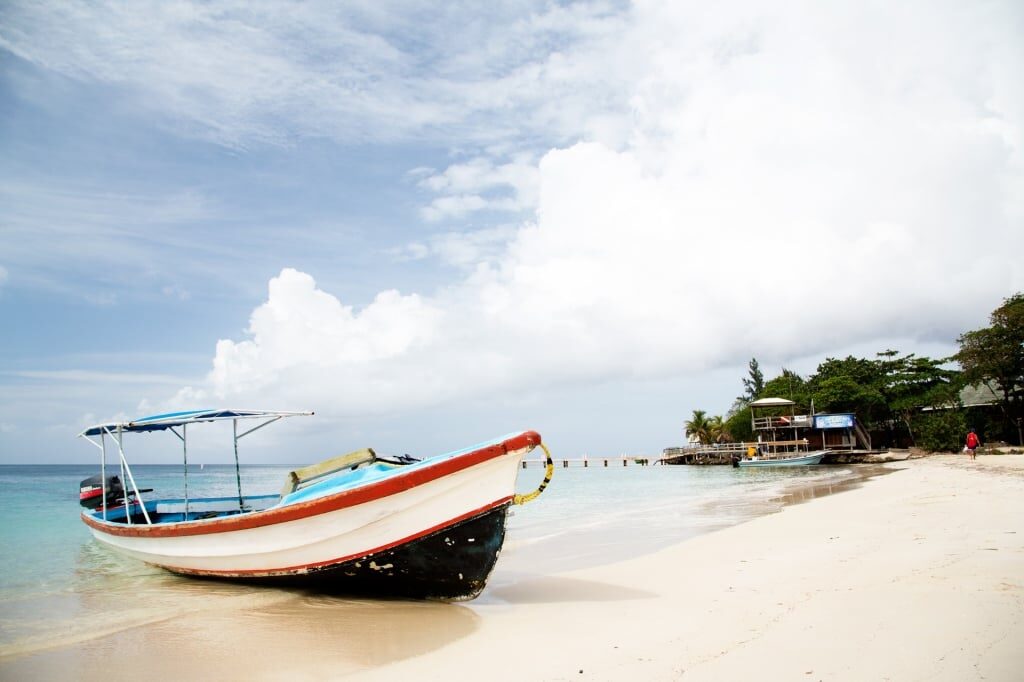
Roatan, Honduras
Dreaming of feeling the sun on your face and snorkeling in crystal clear waters? Browse Central America cruises here and book a vacation with Celebrity Cruises.
